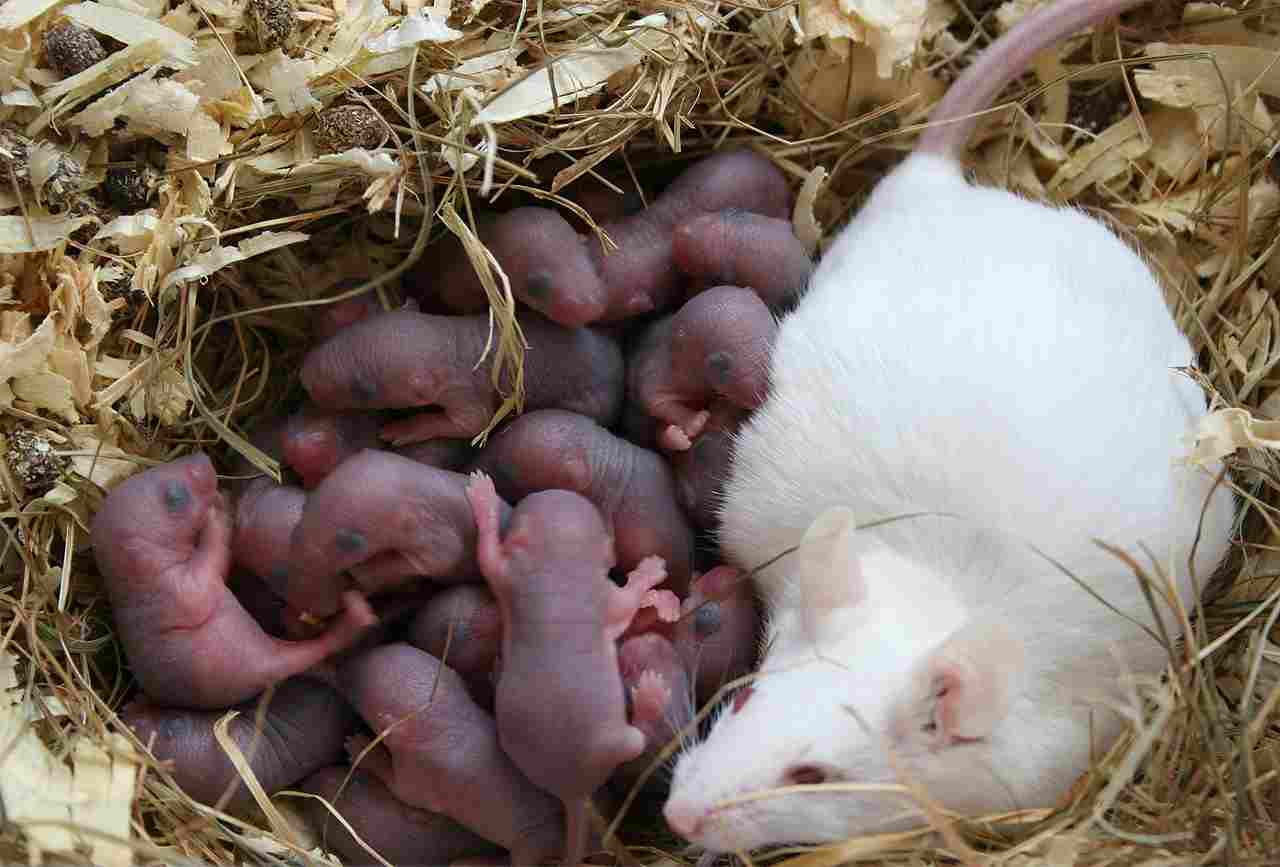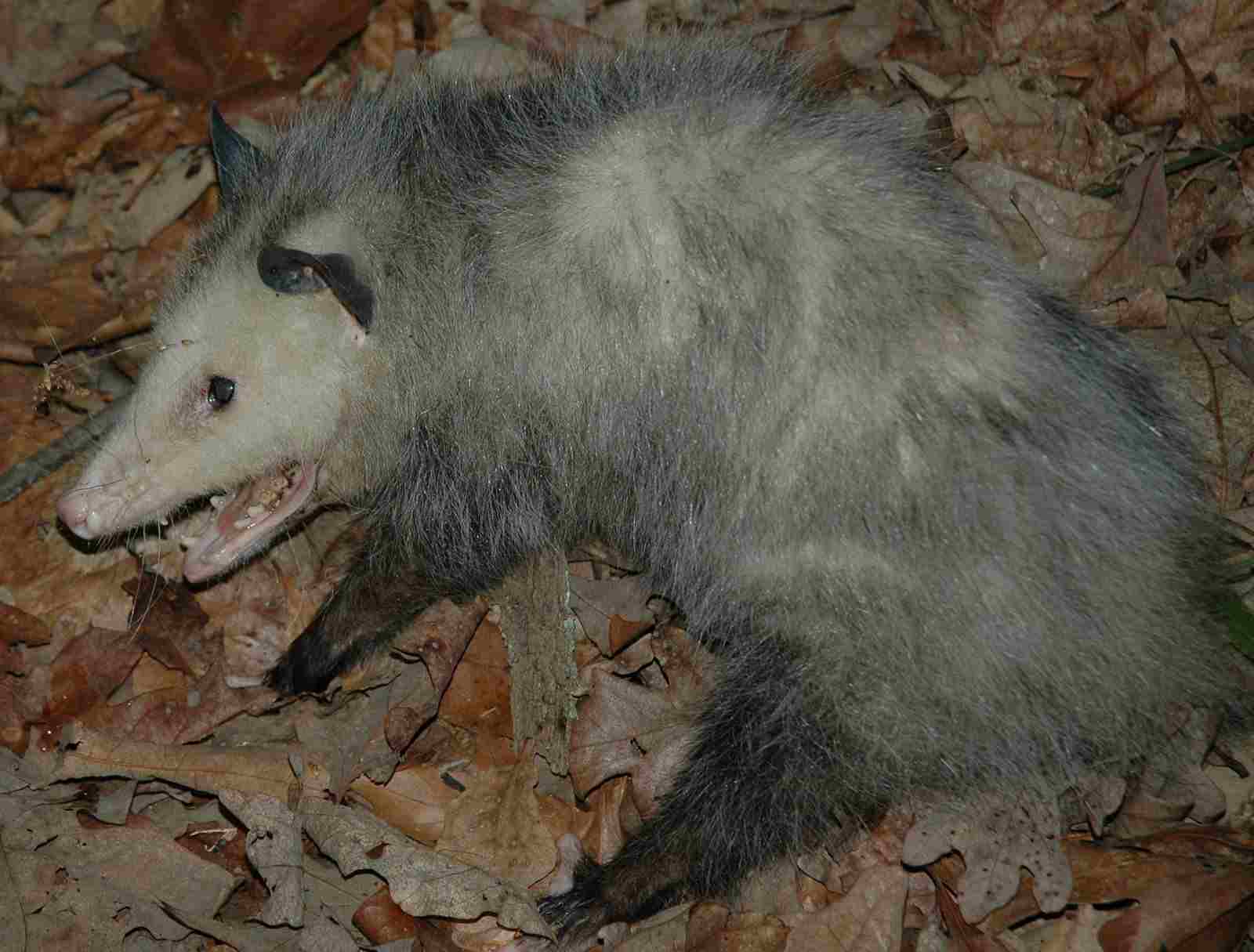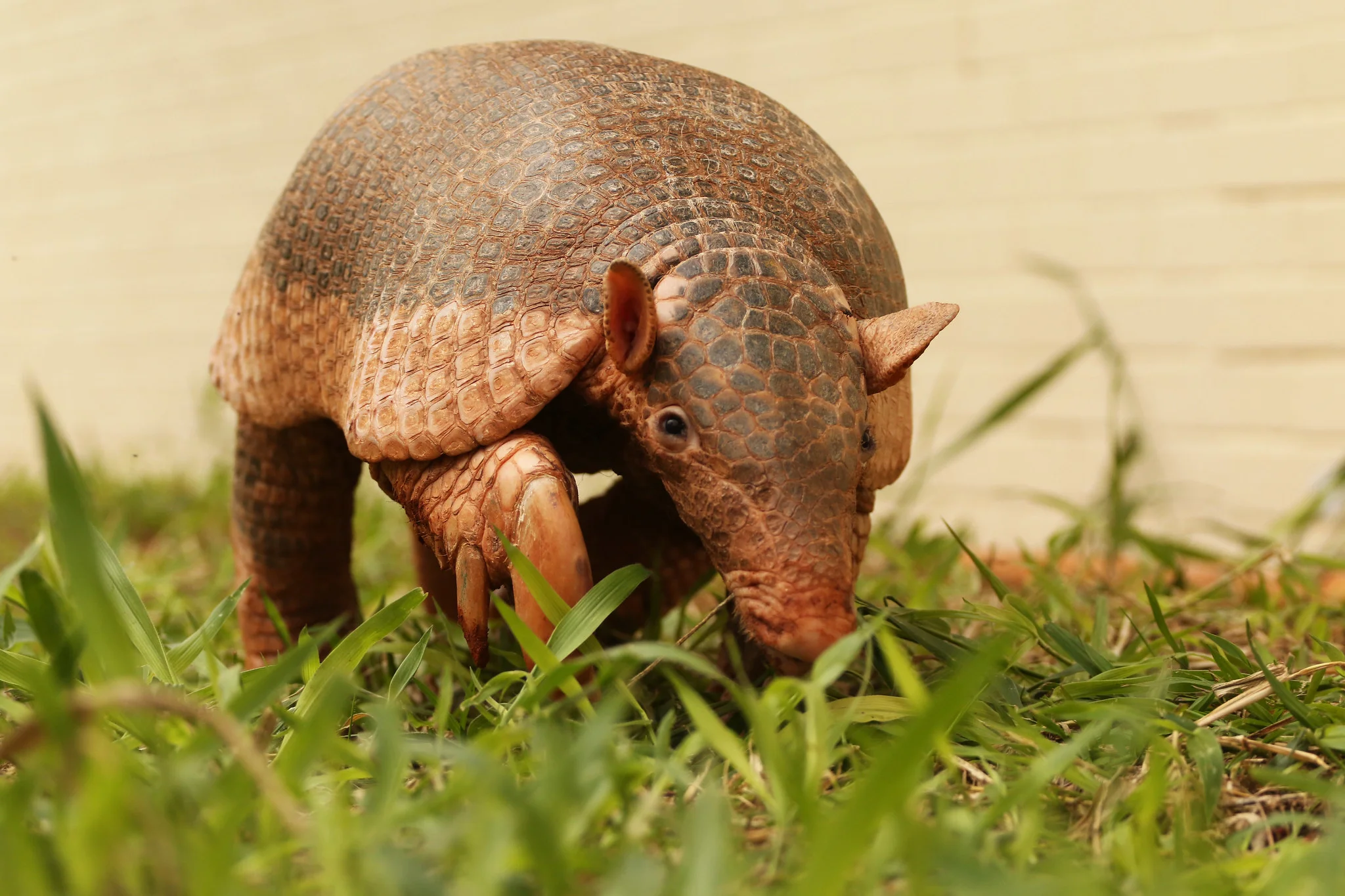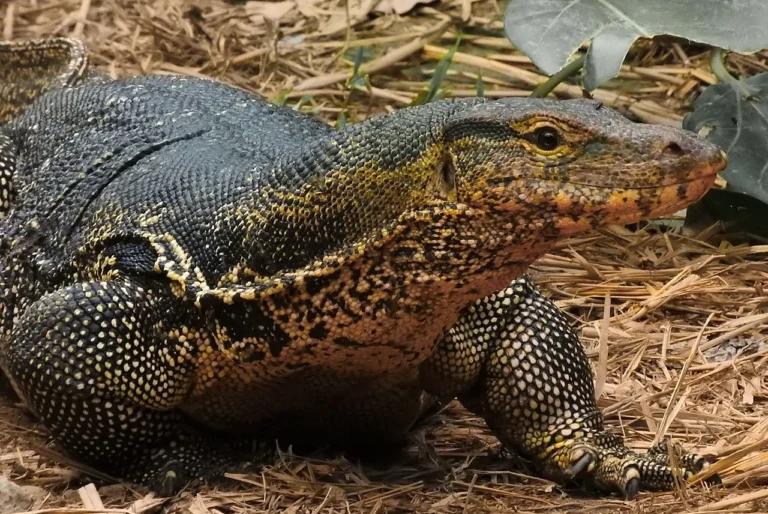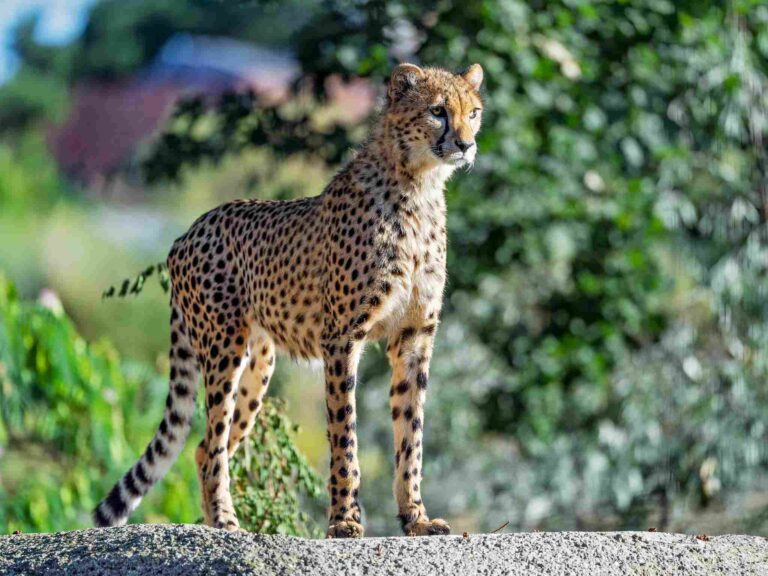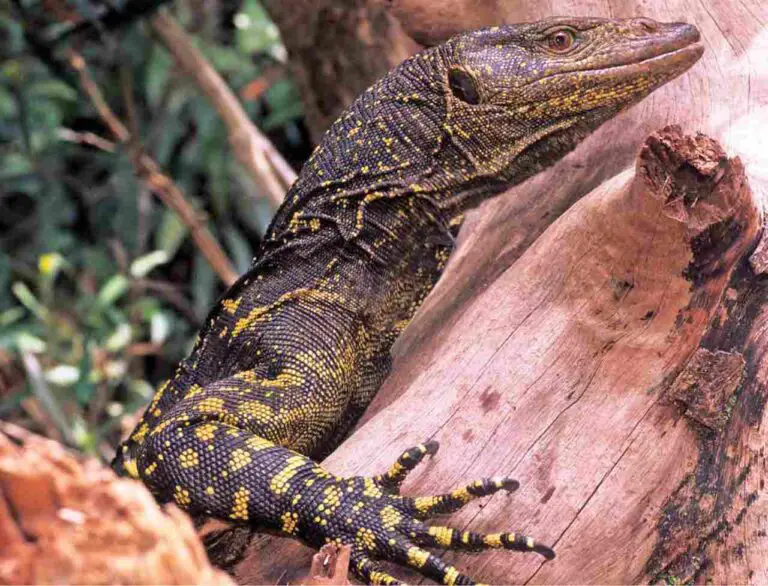Australian Possum Vs American Opossum Size, Weight, Overall Comparison
When comparing an Australian possum to an American opossum, their shared marsupial lineage reveals striking similarities. However, subtle differences in appearance set them apart, with the Australian possum boasting a shorter snout, distinct fur color, and a bushier tail. Delving into the potential outcome of a confrontation, their morphological closeness implies a closely contested battle, yet the American opossum’s slightly larger size and predatory nature often tip the scales in its favor.
I). Morphological and Physiological Affinities:
– Both Australian possums and American opossums share common marsupial traits, forming a basis for their morphological and physiological similarities.
II). Australian Possum’s Unique Features:
– The Australian possum stands out with a shorter snout, different fur coloration, and a tail characterized by bushiness. These features contribute to its distinctive appearance within the marsupial family.
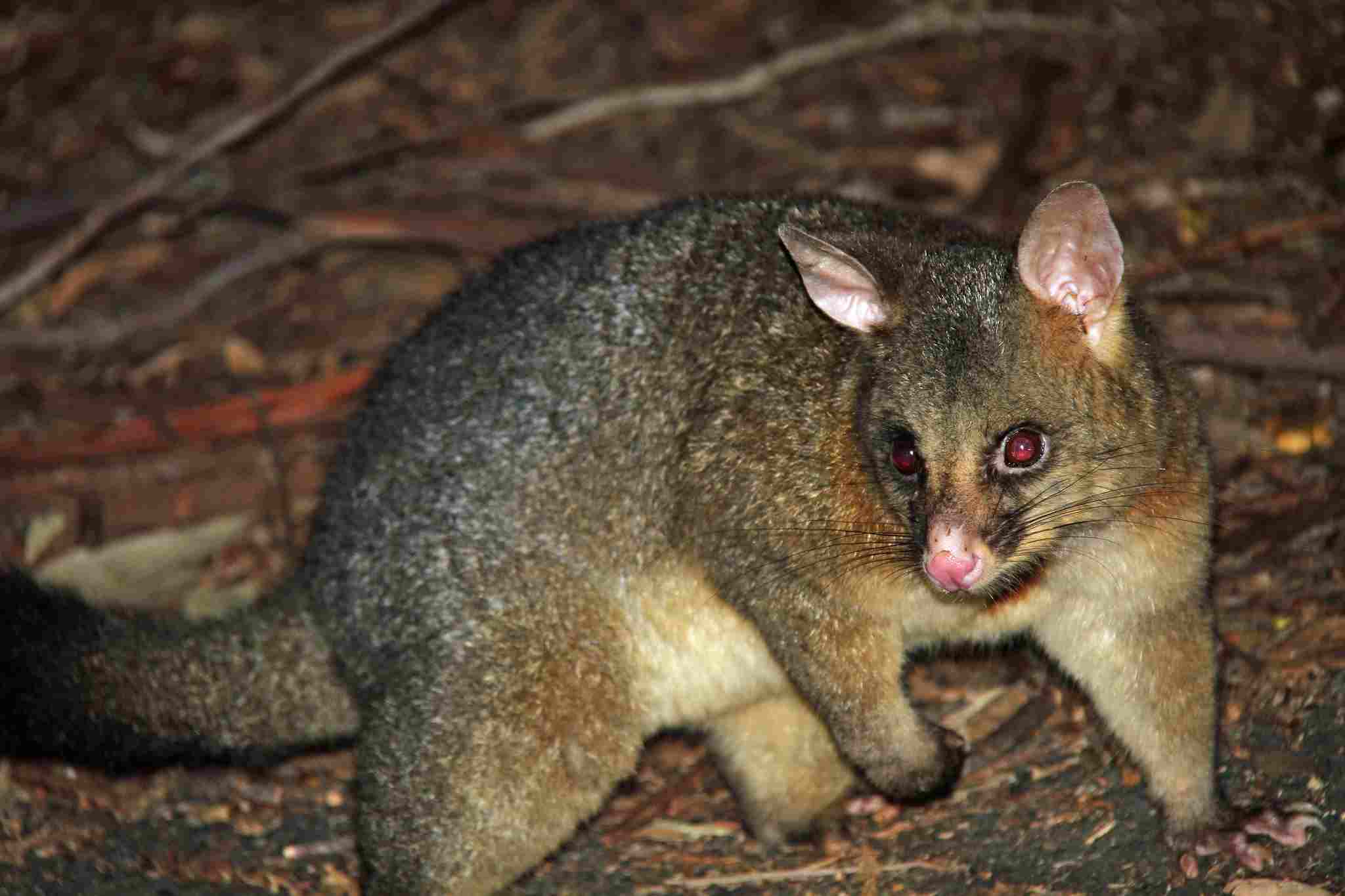
III). Fur Color Discrepancies:
– Australian possums and American opossums exhibit variations in fur color, offering a visual contrast that aids in species differentiation.
IV). Tail Characteristics:
– The tail morphology differs between the two species. Australian possums sport bushier tails, while American opossums typically have thinner, less prominent tails.
V). Predicting a Close Confrontation:
– In a hypothetical fight, the morphological similarities suggest a closely contested battle. The Australian possum’s agility and the American opossum’s size and predatory nature create an intriguing dynamic.
VI). American Opossum’s Size Advantage:
– The American opossum, on average, is slightly larger and heavier than the Australian possum. This size disparity often grants it an edge in confrontations, influencing the potential outcome.
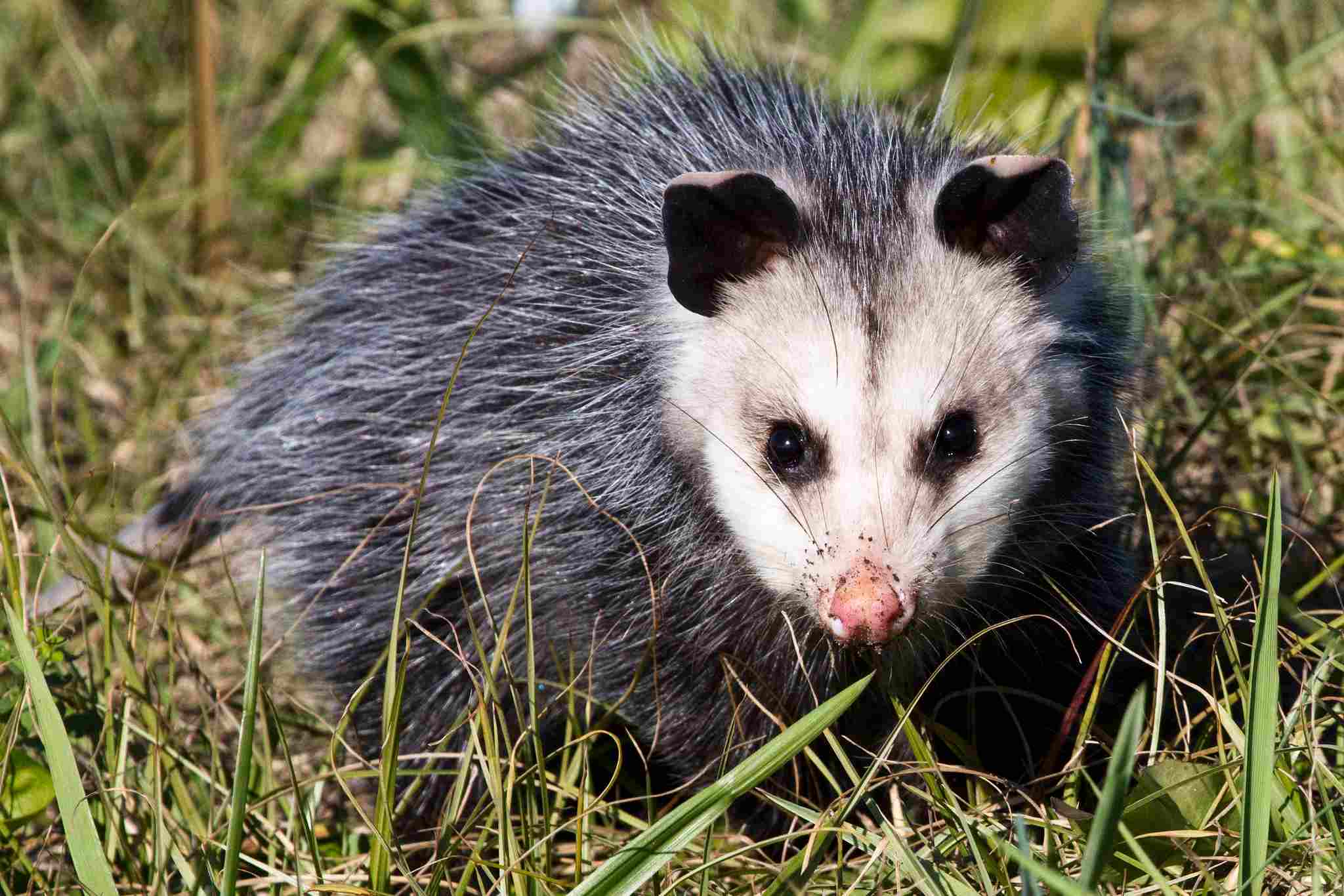
VII). Predatory Nature:
– The American opossum’s inherent predatory instincts add another layer to the potential confrontation. While the Australian possum is more agile, the opossum’s predatory nature enhances its chances of success in most scenarios.
VIII). Agile Australian Possum:
– Despite the size difference, the Australian possum’s agility remains a noteworthy factor, contributing to its ability to navigate and potentially evade the American opossum’s attacks.
IX). Insights into Interspecies Dynamics:
– Examining the morphological and physiological distinctions between Australian possums and American opossums provides insights into the intricacies of interspecies dynamics. While a close confrontation is plausible, the opossum’s size and predatory traits often position it as the likely victor, highlighting the nuanced interplay between morphological features and survival strategies.
*Details of Comparison
| Criteria | Australian Possum |
American Opossum
|
| Appearance | Bushy tail, pointed face, silver-grey to brown fur |
Hairless tail, pointed snout, grey to black fur
|
| Size | 32 to 58 cm
(excluding tail) |
40 to 94 cm
(including tail)
|
| Weight | 1 to 4.5 kg | 1 to 5 kg |
| Bite Force (PSI) | Limited information |
Estimated at around 55 PSI
|
| Offensive Advantages | Sharp claws, agile movements |
Diverse dentition, prehensile tail
|
| Defensive Advantages | Camouflage, playing dead |
Playing dead, foul-smelling liquid release
|
| Speed | Information not widely available | 4-7 mph |
| Agility | Highly agile climbers and jumpers |
Good climbers with a prehensile tail
|
| Senses | Excellent night vision, acute smell and hearing |
Nocturnal with good night vision, sensitive smell and hearing
|
| Physical Capacity | Agile climbers adapted to arboreal life |
Generalist omnivores with adaptability
|
| Habitat Preference(s) | Various habitats, including urban areas |
Diverse habitats, including urban areas
|
| Tracks | Claw marks, tail drags |
Five-toed tracks, distinct heel pad, tail line
|
| Lifespan | 6 to 15 years | 1 to 2 years |
| Mode of Feeding | Herbivores, feeding on leaves, fruits |
Omnivores with a diverse diet
|
| Intelligence | Considered intelligent with problem-solving abilities |
Basic problem-solving skills
|
| Social Behavior | Generally solitary, territorial |
Mostly solitary, can tolerate conspecifics
|
| Reproduction | Polygamous, females with pouches for underdeveloped young |
Polygamous, unique reproductive system with a pouch
|
| Parental Behavior | Maternal care includes nursing and protection |
Females carry and nurse young in the pouch
|
| Proximity to Human Areas | Found in urban areas |
Common in suburban and urban environments
|
| Behavior Toward Humans | Can become accustomed but may exhibit territorial behavior |
Generally non-aggressive, may appear timid
|
| Danger Posed to Humans | Minimal danger, may scratch or bite |
Rarely poses a threat, more likely to play dead
|
| Associated Precautions | Caution required when handling |
Generally safe to observe, caution advised for defensive behaviors
|
| Conservation Status | Varied conservation status, species-dependent |
Not globally threatened, generally stable populations
|
1. Taxonomy:
Australian Possum (Common Brushtail Possum):
Order: Diprotodontia
Family: Phalangeridae
Genus: Trichosurus
Species: Trichosurus vulpecula
American Opossum (Virginia Opossum):
Order: Didelphimorphia
Family: Didelphidae
Genus: Didelphis
Species: Didelphis virginiana
2. Appearance:

Australian Possum:
Fur color varies from silver-grey to brown.
Bushy tail, often prehensile.
Pointed face with large, round eyes.
American Opossum:
Fur ranges from grey to black.
Prehensile, hairless tail.
Characterized by a pointed snout and hairless ears.
Comparison:
Both exhibit adaptations for arboreal life, but the Australian Possum has a bushier tail compared to the American Opossum’s more rat-like tail.
Ecological Implications:
Differences in appearance may relate to their respective environments, aiding in camouflage and adaptation to specific niches.
3. Size:
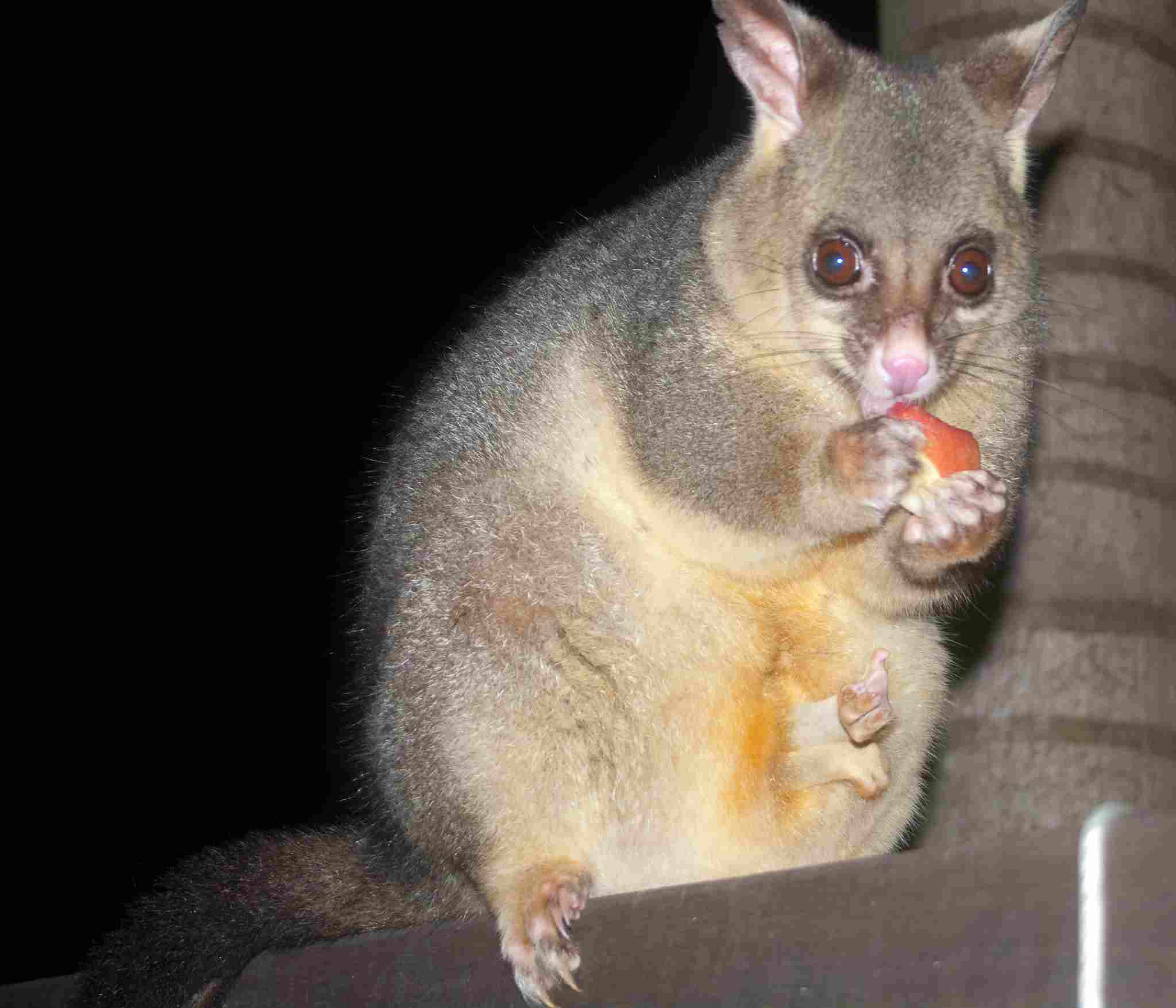
Australian Possum:
Length: 32 to 58 cm (excluding tail).
American Opossum:
Length: 40 to 94 cm (including tail).
Comparison:
American Opossums tend to be larger, potentially influenced by different ecological roles and available resources.
Ecological Implications:
Size variations may reflect adaptations to the availability of resources and competition within their ecosystems.
4. Weight:
Australian Possum:
1 to 4.5 kg.
American Opossum:
1 to 5 kg.
Comparison:
Similar weight ranges, but American Opossums generally have a slightly larger upper limit.
Ecological Implications:
Weight influences aspects like diet, predation, and energy requirements, shaping their ecological roles.
5. Bite Force (PSI – Pounds per Square Inch):
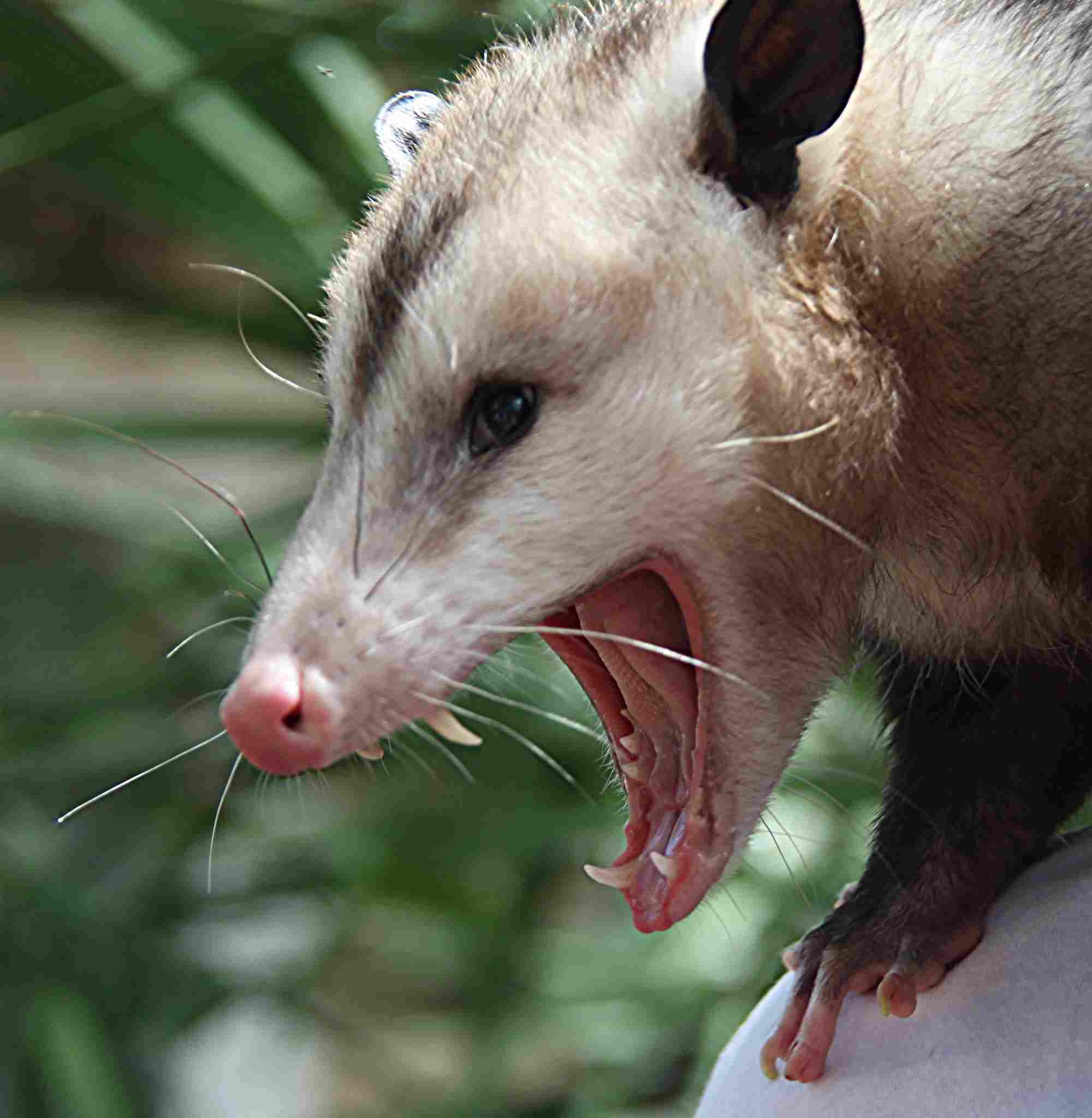
Australian Possum:
Information not widely available.
American Opossum:
Estimated to be around 55 PSI.
Comparison:
Limited information on Australian Possums’ bite force, but American Opossums are noted for a moderate bite force.
Ecological Implications:
Bite force relates to their feeding habits, defense mechanisms, and interactions within their ecosystems.
6. Physical Offensive Advantages:
Australian Possum:
Sharp claws and teeth for climbing and defense.
Agile movements aid in escaping predators.
American Opossum:
Teeth adapted for omnivorous diet.
Prehensile tail can be used for stability.
Comparison:
Both possess adaptations for offense, with the Australian Possum’s agility and the American Opossum’s diverse dentition.
Ecological Implications:
Offensive features are crucial for survival, contributing to their roles in their respective ecosystems.
7. Physical Defensive Advantages:

Australian Possum:
Camouflage through fur coloration.
Ability to play dead when threatened.
American Opossum:
Ability to feign death (“playing possum”).
Release foul-smelling liquid as a deterrent.
Comparison:
Both species employ strategies like playing dead, but the American Opossum has the additional tactic of releasing a noxious odor.
Ecological Implications:
Defensive mechanisms aid in avoiding predation, impacting their position in the food chain.
8. Speed (Km/hour or Mile/hour):
Australian Possum:
Information not widely available, but capable climbers.
American Opossum:
Slow runners, typically reaching speeds of 4-7 mph.
Comparison:
Australian Possums are known for agility in trees, while American Opossums are not particularly fast runners on the ground.
Ecological Implications:
Speed characteristics reflect their modes of locomotion and adaptation to different environments.
9. Agility:
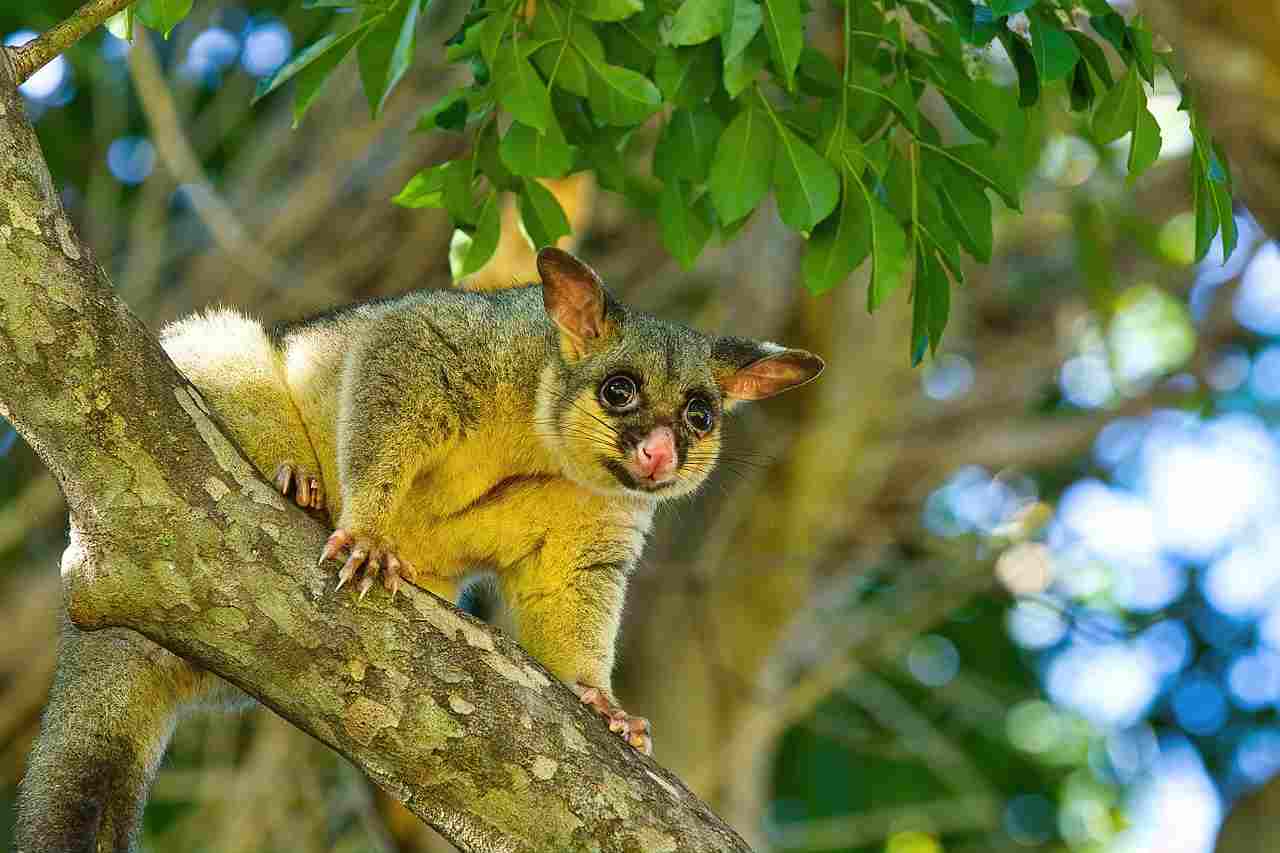
Australian Possum:
Highly agile climbers and jumpers.
Prehensile tail aids in balance.
American Opossum:
Good climbers but less agile than Australian Possums.
Prehensile tail assists in climbing.
Comparison:
Both exhibit agility, but Australian Possums are renowned for their exceptional climbing and leaping abilities.
Ecological Implications:
Agility influences their ability to navigate and exploit various ecological niches within their habitats.
10. Senses:
Australian Possum:
Excellent night vision.
Acute sense of smell and hearing.
American Opossum:
Nocturnal with good night vision.
Sensitive sense of smell and hearing.
Comparison:
Both species have adapted sensory abilities for nocturnal activities, but the Australian Possum might have a slightly superior night vision.
Ecological Implications:
Nocturnal adaptations enhance their efficiency in finding food and avoiding predators during the night.
11. Overall Physical Capacity:
Australian Possum:
Agile climbers and jumpers.
Well-adapted to arboreal life.
American Opossum:
Generalist omnivores with adaptability.
Climbers with a prehensile tail.
Comparison:
While both exhibit adaptability, the Australian Possum excels in arboreal activities, whereas the American Opossum is more of a generalist.
Ecological Implications:
Their overall physical capacities contribute to their ecological roles and niche specialization.
12. Habitat Preference(s):
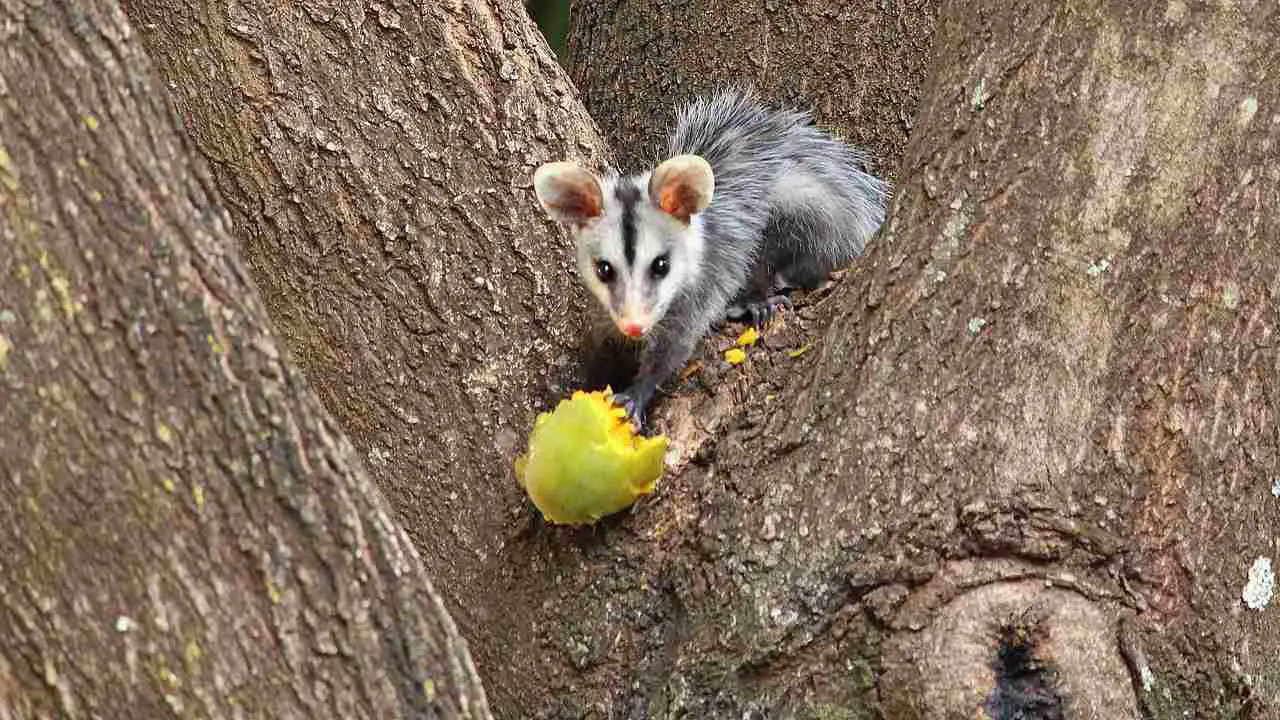
Australian Possum:
Various habitats, including forests, urban areas, and woodlands.
American Opossum:
Diverse habitats, including forests, swamps, and urban areas.
Comparison:
Both species show adaptability to various environments, including human-altered landscapes.
Ecological Implications:
Habitat preferences impact their interactions with other species and their overall ecological impact.
13. Tracks:
Australian Possum:
Tracks show distinctive claw marks and tail drags.
Vary depending on the substrate.
American Opossum:
Five-toed tracks with distinct heel pad.
Tail may leave a thin line between tracks.
Comparison:
Different track characteristics, with the Australian Possum’s tracks often reflecting its climbing habits.
Ecological Implications:
Tracking provides insights into their movements, behavior, and potential interactions within their environments.
14. Lifespan:
Australian Possum:
Typically 6 to 15 years in the wild.
American Opossum:
Short lifespan of around 1 to 2 years in the wild.
Comparison:
Australian Possums generally have a longer lifespan compared to American Opossums.
Ecological Implications:
Lifespan influences population dynamics, reproductive strategies, and overall ecological contributions.
15. Mode of Feeding:
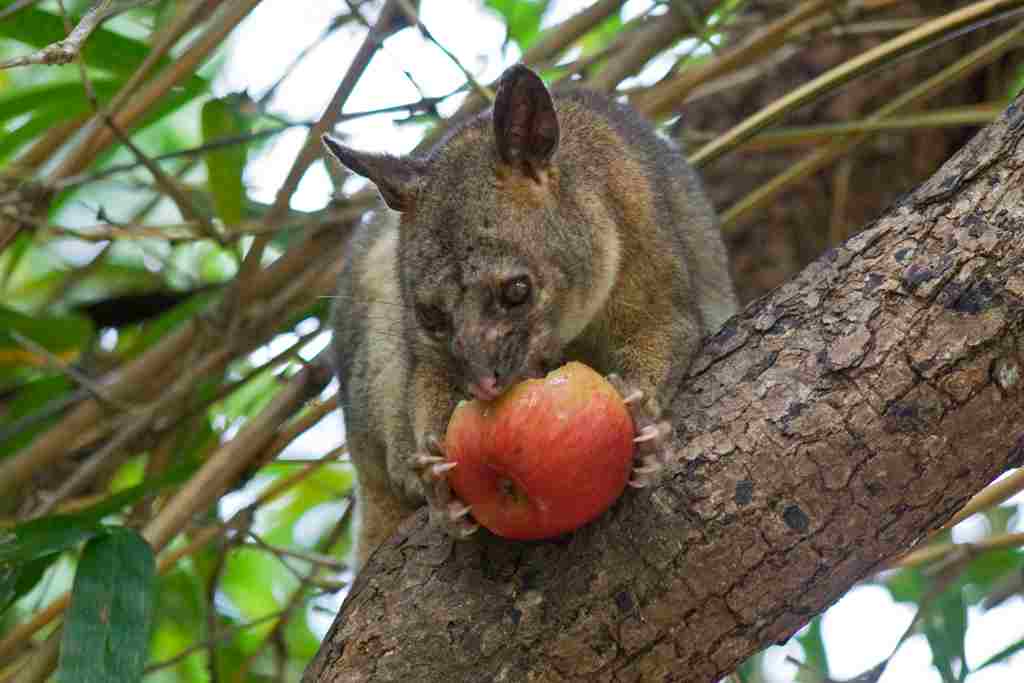
Australian Possum:
Herbivores, primarily feeding on leaves, fruits, and flowers.
American Opossum:
Omnivores with a diverse diet, including small animals, insects, and fruits.
Comparison:
While both can be opportunistic feeders, the Australian Possum tends to be more herbivorous.
Ecological Implications:
Differences in feeding habits impact plant-animal interactions and potential competition with other species.
16. Intelligence:
Australian Possum:
Considered intelligent, with problem-solving abilities.
American Opossum:
Display basic problem-solving skills.
Comparison:
Both species exhibit some level of intelligence, with the Australian Possum potentially showing more advanced cognitive abilities.
Ecological Implications:
Intelligence influences their ability to adapt to changing environments and find food sources.
17. Social Behavior:
Australian Possum:
Generally solitary, territorial animals.
American Opossum:
Mostly solitary, but can tolerate conspecifics in certain situations.
Comparison:
Both species exhibit solitary behavior, but the Australian Possum tends to be more territorial.
Ecological Implications:
Social behavior affects population dynamics, resource utilization, and interactions within their ecosystems.
18. Mode of Reproduction:
Australian Possum:
Polygamous mating system.
Females give birth to relatively undeveloped young, which then continue to develop in the pouch.
American Opossum:
Polygamous mating system.
Unique reproductive system with a bifurcated vagina and a pouch for carrying and nurturing underdeveloped young.
Comparison:
Both species exhibit polygamous mating systems, but their reproductive anatomy and strategies differ.
Ecological Implications:
Reproductive strategies impact population dynamics, competition for mates, and survival rates of offspring.
19. Parental Behavior:
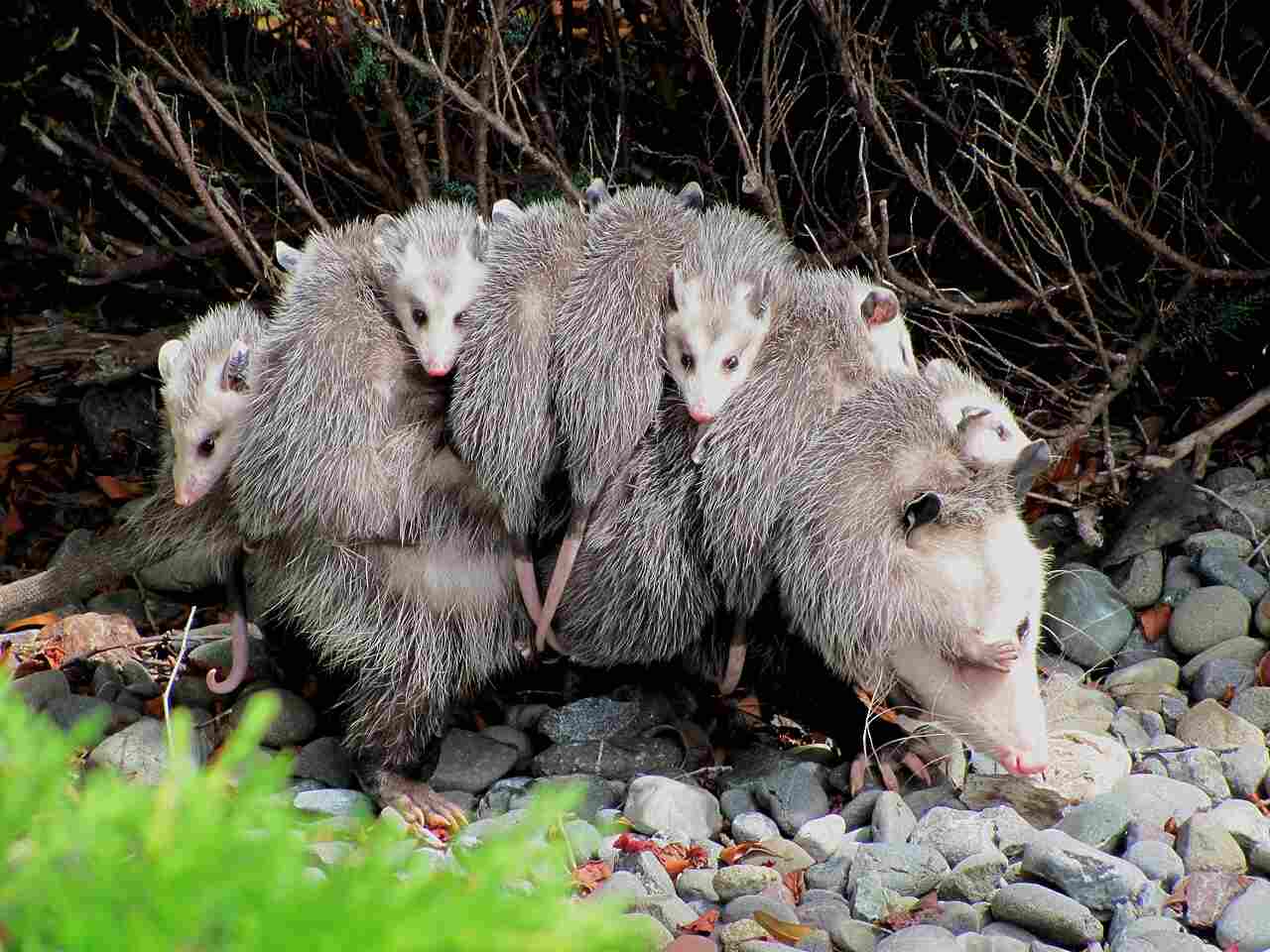
Australian Possum:
Females provide care for their young, including nursing and protection.
American Opossum:
Females carry and nurse their underdeveloped young in the pouch.
Comparison:
Both species display maternal care, but the nature and location of care differ.
Ecological Implications:
Parental behavior influences the survival and development of offspring, shaping population dynamics.
20. Proximity to Human-Inhabited Areas:
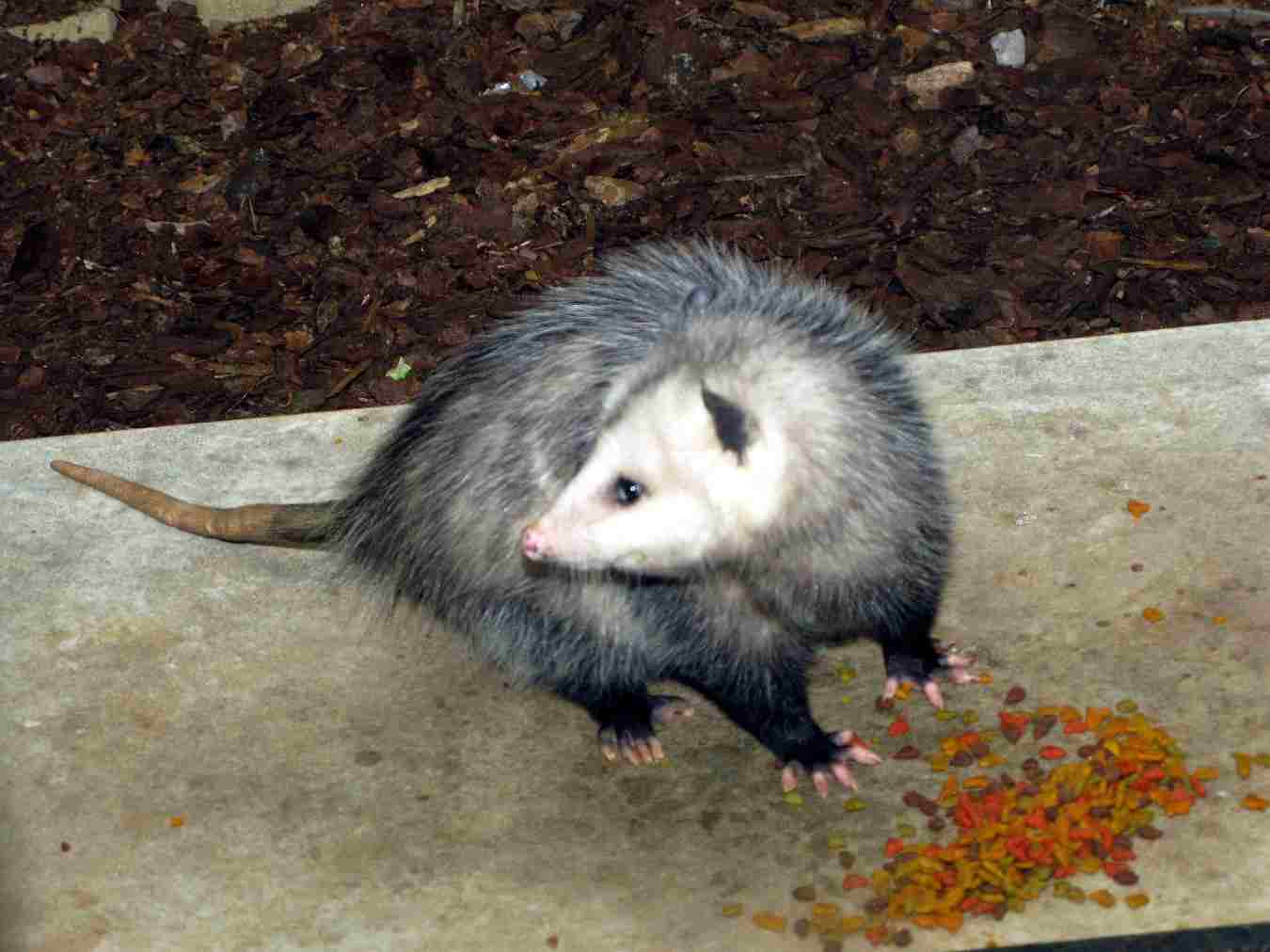
Australian Possum:
Often found in urban areas, adapting to human-altered landscapes.
American Opossum:
Common in suburban and urban environments, thriving near human habitation.
Comparison:
Both species demonstrate adaptability to human-altered landscapes, often coexisting in urban areas.
Ecological Implications:
Their proximity to humans can lead to both positive and negative interactions, affecting local ecosystems.
21. Behavior Toward Humans:

Australian Possum:
Can become accustomed to human presence but may exhibit territorial behavior.
American Opossum:
Generally non-aggressive towards humans, may appear timid.
Comparison:
While both can adapt to human presence, the Australian Possum may display more territorial behavior.
Ecological Implications:
Behavioral responses to humans influence the potential for conflicts and coexistence in shared environments.
22. Danger Posed to Humans:
Australian Possum:
Generally poses minimal danger; may scratch or bite if feeling threatened.
American Opossum:
Rarely poses a threat to humans; more likely to play dead when confronted.
Comparison:
Both species are typically not considered dangerous to humans, preferring avoidance or defensive strategies.
Ecological Implications:
Low danger to humans facilitates coexistence and reduces the likelihood of negative human-wildlife interactions.
23. Associated Precautions:
Australian Possum:
Caution required when handling, especially if the possum feels cornered.
American Opossum:
Generally safe to observe; caution advised in case of defensive behaviors.
Comparison:
Similar precautions for both species, emphasizing respect for their natural behaviors.
Ecological Implications:
Understanding and respecting their behaviors contribute to safer human-wildlife interactions.
24. Conservation Status:
Australian Possum:
Varied conservation status depending on the species; some are of least concern, while others may face threats.
American Opossum:
Not globally threatened; population abundance is generally stable.
Comparison:
Conservation statuses vary within each species, influenced by factors such as habitat loss and human impact.
Ecological Implications:
Conservation efforts should be tailored based on the specific needs and threats faced by different possum and opossum species.
Summary of Comparison
Appearance:
Australian Possum: Bushy tail, pointed face, silver-grey to brown fur.
American Opossum: Hairless tail, pointed snout, grey to black fur.
Size:
Australian Possum: 32 to 58 cm (excluding tail).
American Opossum: 40 to 94 cm (including tail).
Weight:
Australian Possum: 1 to 4.5 kg.
American Opossum: 1 to 5 kg.
Bite Force (PSI):
Australian Possum: Limited information.
American Opossum: Estimated at around 55 PSI.
Physical Offensive Advantages:
Australian Possum: Sharp claws, agile movements.
American Opossum: Diverse dentition, prehensile tail.
Physical Defensive Advantages:
Australian Possum: Camouflage, playing dead.
American Opossum: Playing dead, foul-smelling liquid release.
Speed:
Australian Possum: Information not widely available.
American Opossum: 4-7 mph.
Agility:
Australian Possum: Highly agile climbers and jumpers.
American Opossum: Good climbers with a prehensile tail.
Senses:
Australian Possum: Excellent night vision, acute smell and hearing.
American Opossum: Nocturnal with good night vision, sensitive smell and hearing.
Overall Physical Capacity:
Australian Possum: Agile climbers adapted to arboreal life.
American Opossum: Generalist omnivores with adaptability.
Habitat Preference(s):
Australian Possum: Various habitats, including urban areas.
American Opossum: Diverse habitats, including urban areas.
Tracks:
Australian Possum: Claw marks, tail drags.
American Opossum: Five-toed tracks, distinct heel pad, tail line.
Lifespan:
Australian Possum: 6 to 15 years.
American Opossum: 1 to 2 years.
Mode of Feeding:
Australian Possum: Herbivores, feeding on leaves, fruits.
American Opossum: Omnivores with a diverse diet.
Intelligence:
Australian Possum: Considered intelligent with problem-solving abilities.
American Opossum: Basic problem-solving skills.
Social Behavior:
Australian Possum: Generally solitary, territorial.
American Opossum: Mostly solitary, can tolerate conspecifics.
Mode of Reproduction:
Australian Possum: Polygamous, females with pouches for underdeveloped young.
American Opossum: Polygamous, unique reproductive system with a pouch.
Parental Behavior:
Australian Possum: Maternal care includes nursing and protection.
American Opossum: Females carry and nurse young in the pouch.
Proximity to Human-Inhabited Areas:
Australian Possum: Found in urban areas.
American Opossum: Common in suburban and urban environments.
Behavior Toward Humans:
Australian Possum: Can become accustomed but may exhibit territorial behavior.
American Opossum: Generally non-aggressive, may appear timid.
Danger Posed to Humans:
Australian Possum: Minimal danger, may scratch or bite.
American Opossum: Rarely poses a threat, more likely to play dead.
Associated Precautions:
Australian Possum: Caution required when handling.
American Opossum: Generally safe to observe, caution advised for defensive behaviors.
Conservation Status:
Australian Possum: Varied conservation status, species-dependent.
American Opossum: Not globally threatened, generally stable populations.
Conclusion:
I. Similarities:
Both Australian possums and American opossums exhibit adaptability to diverse environments.
They share nocturnal habits, polygamous mating systems, and omnivorous diets.
II. Differences:
Differences in appearance, size, and weight.
Varied ecological implications, from lifespans to danger posed to humans.
Distinctive behaviors such as playing dead (opossum) and territoriality (possum).
